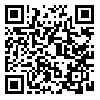BibTeX | RIS | EndNote | Medlars | ProCite | Reference Manager | RefWorks
Send citation to:
URL: http://rph.khu.ac.ir/article-1-2550-en.html
The aim of this study was to investigate the prevalence of bullying among students and its relationship to the quality of family environment, impulsivity, depression, beliefs supportiveofaggressive behavior, and attitude towards school. The sample consisted of 344 secondary school students (205 girls and 139 boys) in Kermanshah who were selected by multistage cluster sampling method. They completed Olweus Bully/victim Questionnaire, University of Texas Depression scale, Impulsivity scale(Bosworth, 1999), Beliefs supportive of Violence (Dahlberg et al., 1998), Psychological sense of School membership scale (Goodenow, 1993), and family climate scale(Holman et al., 1994). Data was analyzed by descriptive analysis procedures and stepwise regression analysis. The results showed that different forms of bullying behaviors prevalence are 13/7 to 52/1 percent for boys, and 10/2 to 64.6 percent for girls. The most reported bullying behaviors for both of groups were name calling and teasing in hurtful way, and the least reported bullying behaviors were taking money or other thing away and damaging them. Results showed that among girls, among all studied variables have significant correlations with bullying behavior, but among boys just three variables (the quality of family climate, depression, and impulsivity) were significantly correlated with bullying behavior. Stepwise regression analysis also showed that for girls, the three variables Quality family atmosphere, a sense of belonging to school and attitudes toward violence significantly predict bullying, but for boys, only impulsivity was significant predictor.. Finally, the implications of findings are discussed.
Received: 2016/04/15 | Accepted: 2016/04/15 | Published: 2016/04/15
| Rights and permissions | |
 | This work is licensed under a Creative Commons Attribution-NonCommercial 4.0 International License. |




